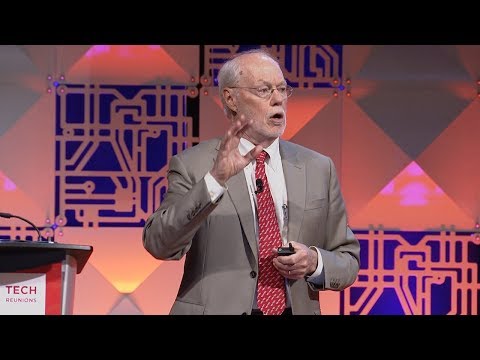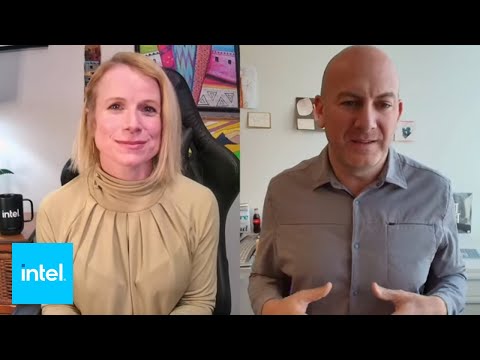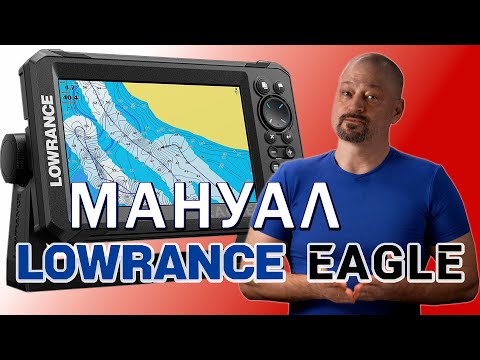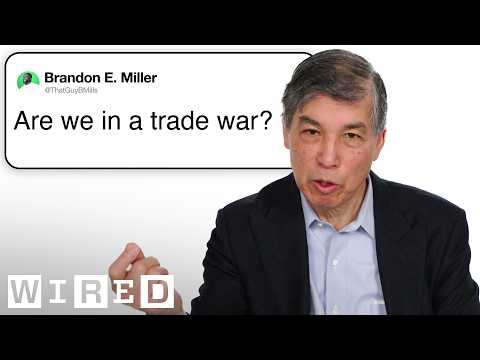Technology Day 2018: AI and Your Health - Phillip Sharp

Hi, I'm Whitney aspect the CEO of the MIT Alumni Association and, I hope you enjoy this digital production, created, for alumni and friends like you. Good. Morning. It's, an honor death have the opportunity, to address you this morning, I am. Sort, of setting the stage for how, we view. Artificial. Intelligence, and information, technology. Transforming. Biological. Science and biomedical, science, and to do that I'm. Going to talk a little bit about history and, set it the, biotech, development. In the context, of this and in turn to, information. Technology, and how I see, it transforming, the future of. Medicine. And science. If. You think about it. This. Whole subject, in, the context. Of modern molecular biology. We can't begin, with, the. Discovery, of Watson, Crick rosalind. Franklin, and Marv's Wilkins, in the. Structure, of DNA in, 1953. Now. The interesting thing about this is, that. Shortly. Thereafter in, the late 50s. Jim. Watson was recruited, to Harvard, to, start, a. Group. Of molecular, biologists, at Harvard, and Jim. Watson's, mentor, Salvador. Luria, was, recruited, to MIT, to. Convert. The biology. Department at MIT into. A gene, and molecular oriented. Department so. Here we see at the two ends of Mass Ave these. Universities. Making, a transformation. In biological, science, or. Inning, this science, to, genes. Now. It took us about 10, years to understand. How, information. From DNA. Was. Transmitted. Into, the cell from. The. Biological process. That's inherited, from each, individual. And, what. You see at the top of this slide is a schematic. Of DNA, this beautiful, molecule, that's. Long and linear, and you know the nucleotide, sequence of that DNA, has, the information, for. Biological. Function. And. It's transmitted. As information. Into, the cell by an intermediate. Called RNA, and. Then. That RNA, is taken, and decoded. By. A biological. Machine to make the proteins, that carry out most. Of the functions, in, cells. So. This whole information, transfer. Process. Was. Elucidated. For the first time in the early 60s. Mid 60s, and told. Us how, DNA. Then. Decoded. Was. Decoded, in the self to, carry out function, all. Of this was worked done. It without. Mostly. Chemistry, and was. Done with, a pure intellectual, interest, of understanding. What, DNA was about, but. Knowing how to manipulate DNA. Was a big part of this science, and also set the stage for. What. Happened, in the middle of the 70s, where. There was a true revolution. In, chemistry. In in, biological. Science, with. The development. Of recombinant. DNA, the. Ability to take DNA and, join. It in in. In specific. Ways, the. Ability, to sequence, DNA. And. This, was Wally Gilbert at Harvard, and Fred Sanger in Cambridge, and the ability. To chemically, synthesize, DNA, and, this. Really MIT, had a major role in because, Gobind Khorana the. Person who first, synthesized. The gene was a faculty member here at MIT. In, the department, of chemistry so. Then in the mid 70s, we. Had the, ability to do, synthetic, biology. To actually, make gene. Structures. Of novel, function, and then. To carry out the. Introduction. Into a cell to see the activities, of new cells and, this was truly transformative, and then. Was this, process, of biotechnology. Because we recognized, that it was possible, to use this chemistry, to, solve major societal, problems, and in transferring, the, science. From the laboratory, into private companies, so. That it could grow was, the origin of, biotechnology. And here MIT had some very special, relationships. Bob. Swanson. Was. The founder, of Genentech, with her Boyer bob, was a chemistry, undergrad, at MIT and, a Sloan School graduate. He, worked with kleiner, and Perkins a venture capitalist, on the west coast Tom, Perkins was an MIT graduate, and the. Third company established. Was. Biogen, here in Cambridge. And Geneva Switzerland, it. Was established in, 1978. And, infamous. For getting, involved, in, establishing, this company actually was an MIT alumni, ray Schaefer who's sitting in the middle of this picture and, this. Is a picture of a Biogen, organization. Early, in 78, that was a founding, year it's 40 years old now. Myself. On the left side Wally. Gilbert in the middle and a number of European scientists. It, was originally, established in. Geneva, Switzerland and, the. Motivation, here was to bring, the science, that we had developed, in a laboratory into. Society, so that could grow it was mind and hand at its, most fundamental level, and this. Has advanced, enormously over, the years and it has had a transformational. Prospect. Not, only in medicine, and in science, but. Also in. The. Economy. And employment, around. The world what. I'm showing you here is. Boston. And MIT in, Cambridge and, if.
You See, this or in, looking at this you're looking down from Harvard, from the. North to, MIT, MIT. Is, these, red. Buildings, along the Charles River at the bottom of the slide and what. You note around. MIT, is a number, of blue, buildings. These. Are all, biotechnology. Pharmaceutical, companies. They range from by agenda, who has six cup buildings. In this space to. Novartis. Which, has its international. Headquarters for, pharmaceutical. Science, here in Cambridge, about one and a half blocks from. Us, there. Are about. 70,000. Jobs in. Massachusetts now. That. Are related, to biotechnology. 35,000. Of those jobs is research, and development. It. Is the most intense, research, and, development. Community, in. Life science, in the world and. It, is. Organized. Along, the, red line on the boundaries, of MIT, with. Harvard at the top and Mass General and, hospitals. Here. At the bottom so over, something, like 50, years, this. Science, has transformed, our environment, here at MIT and, in. The country, in the world. Now. If you want to see that in graphic, terms I. Will. Show you this. Is Kendall Square in. 1975. I came to MIT in 1974. And, this. Is what in the, Kendall. Square area Kendall, Square is down to the upper is upper right there, this, is Draper, labs you're looking to the south and, it. Was. Vacated. Because NASA, was. Hopefully. Going to move here at least the research station and this, part adjacent, to MIT, was. Emptied. By Cambridge for that reason, Biogen. Started, in a small building over on bendy Street in the upper left if you. Look at Kendall, Square now and this is 2012. And I know this. Is like your TV commercial, for your cosmetics. It's black and white and then it's colored. But. It does. Projecting the, issue that, here's Kendall Square or Draper, here at the bottom again in the, same orientation, Kendall. Square up to the right and all of this. Found us and swimming. Around the campus in the other direction is. The. Biotechnology. Pharmaceutical. Community. Here and it is also a community, that. Has energy, research in it IT, research, and we're going to talk a little bit more about that but, it is the hub of. Biomedical. Research innovation. I did. A calculation and. In my mind, 35,000. People in the biotech community, doing life science in this community and there's, at least 20,000. On the, campuses, of students. And graduate, students and postdocs and faculty which. Sums to 50,000. People in this community doing, life science, research now. So. How. Did this come about it, came about because of, the, investment. In intellectual. Nurturing. Of the. Life science, on this campus, and I just want to point that out to you because many of you have been part of that over, many. Many decades in. 1972. The, Center for cancer research was, established, here doubling. The, size of biological, science and cell biology Whitehead.
Was, Established, ten, years later in, introducing. 20 new scientists. In life. Science, biology. As, a core, requirement, spreading. The language, of biology and, molecular biology. Says the campus was. Established. In, nineteen. 2000. We expanded. Neuroscience. By a new department, and the. Establishment. Of the McGovern Institute in, the pick our Institute, here on campus, turning. The campus into, one of the, outstanding. If, not number one neuroscience. Communities, in the. World, in. 2003. The Broad Institute which. I'll say a little bit more about in a few moments was established. Ultimately. Came into MIT, as, part of MIT for several years and in ten years ago, was. Became. Freestanding, from MIT with a relationship. To MIT and Harvard, when, Eli brode committed. About a half of the dollars to endow this Institute, here, on the edge of MIT, and the, Koch Institute was. Established in 210, and, the Koch Institute is, a Cancer, Center. Institute, where engineers, and biologists, on every, floor are working. Together to. Attack this problem of cancer and it has been extraordinarily, successful, and, the, IMATS Institute, was established after. This I'm sorry I didn't, have it on here today, a be. A bigger, bridge between engineering. And life, science, in the hospitals, at MGH, and Brigham and Women's. The. Engineering, department, at MIT has been a deep, partner. In this over, the last decades, with the establishment. Of the department, of biological engineering. Here at MIT one of the most thriving departments. On campus, now. A third, of all MIT, engineers. Are involved, in life science, and that. Sets a stage for this new I in. The. Informational. Technology, transformation, that, president. Life was talking. About earlier, today, and as, I just mentioned, MIT, and, Kendall, Square and biotech, and information, technology, around us is not, a one-way, street, the. MIT. Is influencing. That community, by that community is influencing. MIT and we have a deep. Partnership. With our communities. Here. Advancing. Life science, in ways that. Is, transformational. Fundamentally. Transformational. Across. The world, so. I want to talk a little bit about the. Broad Institute because. It sets, the stage in many ways for. Information. Technology being. A deep, part of the future of biomedical science. And medicine. Itself. Road. Institute, was a grew. Out of the. National. Initiative to sequence, the human genome and. Eric. Lander, in, the 90s, established. The human genome Institute, Eric Lander, a professor, here at MIT.
An. Institute investigator, at the Whitehead, Institute established. The. Human gene Institute, here at MIT it. Has grown over, those years the. Sequence, of the first human, genome was. Announced. As complete, in. 2003. The. 50th, anniversary, of the discovery of the structure, of DNA by, Watson, incorrect it. Cost us 3 billion, dollars, in, 15. Years to, get that sequence, it was. Mostly, about how to develop, the technology. To do that in a, rapid, way and. If you think, about it it is, an astounding, problem. The. Amount of DNA in your, genome, if laid. Out in the end in every, cell is this long. 3. Angstroms, as a step, a billion. Units it's this long and you. Had to determine the sequence of all of it exactly. We. Have that technology, now. It. Doesn't cost us 3 billion dollars and it doesn't take 15, years, it. Costs, us less than a thousand, and it. Takes hours. We. Have really, by technology. Transformed. How we, obtain. Information. And use. It to understand, life. Science. So. The Broad Institute here. Across the street and human. Genome initiative, from which it grew is the, maid was the major contributor. To this. Science, of genomics. There's. Only two major Institute's. Now that. I see, in the world that are competing academically. And that, is abroad here and the Wellcome Trust in, England. And we. Are a leading, force in this does it matter so. I'll give you a trivial, example this, is a. By. Sequencing. Human cancers, this. Is an indication, as listed. On the left of how, many mutations are, in. Individual. Cancer, cells. So. On the left here to the left is colon with. A DNA repair and in. Those tumor cells there's, a thousand. Patience, in. Those cells in the thousand, genes have mutations, in them. That's. Really. Striking, because you only express, 10,000. Genes, so. 10% of them have mutations, in, that. Cell, is so foreign, that. If you modulate the immune system. By immunotherapy. You. Get, frequent. Elimination. Of the tumor cells even. If they're disseminated. Through the body it is a remarkable. New therapy, the. Next three are lung. Cancers, and, melanoma. They. Have about a hundred and fifty mutations. In genes, one. Hundred and fifty mutations, where, do they come from smoking. And, Sun. Surface sunshine, and. Those. Tumors, frequently. When treat it with immunotherapy. Or seen, as so far and in your city in your body that, they can be rejected. By your immune system. The. Other. Tumors. Listed, to adult, solids, have about 50, now. They don't respond, very well to. Immunotherapy. And we're, trying to figure out why and how to manipulate it and information. Technology, is going to be an important, part of this and over. To the far right is pediatric, tumors and they have very few mutations in them so, we don't expect that, immunotherapy. Is going to be a major. Advance. Or use in those tumors. So. I've. Described, where we're at in terms of, genome. And molecular. Biology, and cell biology in a very broad way, what's. The future in the. Future is something we've, called here, at MIT convergence. Its. Advances, in information technology. Material, science, imaging. Nano and optics. Coupled. With computing. Have transformed, the physical, world and created. All these devices, in the way we communicate the way we live they're. Now ready to begin to transform, life science, the, stage is set we. Need this technology and, in, fact it's a major fraction, major part of the future of all medicine. We need to, be able to do is to, integrate a large, amount of information to. Understand. The process, of disease. And how it develops. Over age. And, how, we can intervene we. Need medical, histories, we need to know something about the environment we need to know something about behavior. We. Need medical, data, from imaging, and metabolism. And cellular, status, and we. Need genetic, profile, because we don't all have the, same risk to. Developing, different, cancers, we. By our nature of inheritance. Of different types in, different places in the world have, a different, subset. Ability, to, cancer, and I will come in on that in a moment. So. This is what we. Want to be able to do and we've MIT, has just recruited, a young. Scientist. Who in, engineering. EECS. It will quickly become a leader on campus Dave Sontag. Is, working. On this and that is taking, medical records, and other information, and, being. Able to identify before. You. Have a diagnosis. In a conventional.
Sense Before, the disease needs to be treated. The. Susceptibility. The, risk to, developing, a disease, because. If we can identify, those, individuals we, can frequently, change, lifestyles. Frequently. Change. Medicines. Slightly. And reduce. The risk of advancing. Into. A condition. Of medical intervention. And treatment. Regina. Bars, Eliot you heard mentioned, earlier, by, inada, has. Been working on this problem from the perspective, of breast cancer, and and I. Want to use her work, in the next few moments to illustrate, how this could be so profoundly. Important. What. We do now for current, diagnosis. Of breast cancer, is we do pathology. And we do imaging, really, do set two attacks, text. Can be very elaborate, or very brief and then. We say it's a grade three estrogen. Gesturing they de nieve her2 negative tumor. We. Can do grade 1 grade 2 there's about six or so different. Diagnostic. Outcomes. And then, we do a treatment, so. We have all this information. But. We reduce it to a very simple, protocol. And why. Because. Way. We do our science we identify, particular diseases, as I'll mention in a moment and, treat. Them in particular ways so we, know that these grade 3 different, tumors have, very different outcomes, even, though they have a pathology. And histology that, is reduced, to those same, information. If we could bring more information, to this could. We distinguish. Those individuals, who have a more, rapidly, advancing, and critical, disease from those individuals who may never see that, disease, again or its quiescent to, their life and, this. Is a question, of how much information you can bring to distinguish, subclasses. Of these. Diseases. So. What we traditionally do, now is carry out clinical, studies and die and. Classify. These. Tumors. From, papers. That are defined. Studies. And responses, to diseases and progression. But. If you take medical, records in this case its medical, records out of a collaboration, by Regina with. Mass General of. 6,000, patients it could be 60,000. Patients it could be 6 million patients, that type. Of information is going to be available and, with. That information could. You. Subtype. These, tumors, for better, diagnostics. And therapeutic. Treatment. Now. One of the categories you're going to want to add to that is the. Genetic. Constituents. Of the, individuals. Who are being diagnosed. And this. Is a. Study. That was in fact just being published. Out of the Broad Institute it's. Using, English, data and I'll, come back to that in a moment but. It's using data that you have a polygenic. School, or you, look at the mix of genes in an individual, and you. Ask what's. The risk. Of they of that, individual. Due to their mix of genes developing. Breast. Cancer and. What you see here from zero, to a hundred percent and that's the.
Category, Of prediction. Of risk using. Genomic, complexity. And the, prevalence of breast cancer, that, if you move over to that 90 percent point, those. Individuals, have a four, fold increased, risk of, developing. A critical. Breast cancer, through their life if you, move to the ninety nine percent one. Percent out, of a hundred one out of a hundred they, have almost a five to six fold increased, risk. So. By looking at the. Genetic, makeup in, a, population. It's. Sort of data 23andme. Can. Can can, now capture you. Can get a a risk, factor for. Different. Types. Of cancer. So. If you combine. Sorry. If. You. Can bind that. Information. For thousands, of people with. Better machine learning analysis, of images, like MRI, images, and cat scan images, better. Analysis. By machine learning, of histology, and pathology. Capturing. Tumor, cells which is shown up at the right and looking. At the genes they're expressing. They're expressing, 10,000, genes and it varies, enormous, ly from one tumor cell to, another so they give you an enormous amount of information and, then. Using, genomic, profile, using. That information it is, almost, impossible. That. We will not be able to, identify. Individuals. Of higher risk or lower. Risk. Intervene. Earlier, with, more specific. Agents. To, get better outcomes, this. Is true in breast. Cancer but, it's also going to be true in every other type of cancer we've. Decreased, the, rate. Of death due to breast cancer by, a third, over. The last. Years we. Can drive that down. To. Very small numbers with, this type of information and that's true of many other cancers. So. What we need is an enhancement, of science, of. Cancer. With better intervention. And prevention, by this, type of information. Providing. Biomarkers. For cancer, that, we can monitor follow-up, monitor and treatment with and we. Can enhance communication. Between the physicians, and the caregivers, and the patients. Because, we'll know more and, we can communicate with. More. Information. To. Help them now. Although this technology, seems available. Why. Aren't we doing it. There. Are actually two major reasons. Research. In this country is. Funded, on. The, treatment, side. The. National Institute of Health which is a wonderful organizations. Transform. Biomedical. Science, but. Basically, focuses, on disease, processes, and how to intervene, in disease processes. There. Is, pharmaceuticals. Or developing. New treatments. There's. Not, a lot, of investment, on how to predict. Risk and, intervene. Earlier, in the risk process. Of disease, progression, and. That's because the payer side the insurance, side is not, taking this on as a task and. Then the second and last thing I will mention is that. We. Have a, very, non. Integrated. Healthcare system, in which, the, payers in one place the. Health care providers, and another of patients, in another we're not an integrated, system and then.
Dealing With patient, privacy information. Becomes, much more difficult here. So. We're going to have to overcome those to. See this. Turn. Into a real science, MIT. Will be a leader in it and. It's. Going to be very, exciting, thank, you very much, you. Thanks. For joining us and for more information on how to connect with the MIT Alumni Association, please. Visit our website. You.
2018-06-20 23:44


